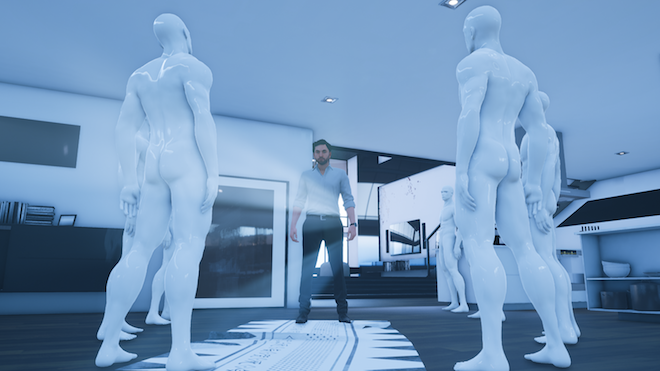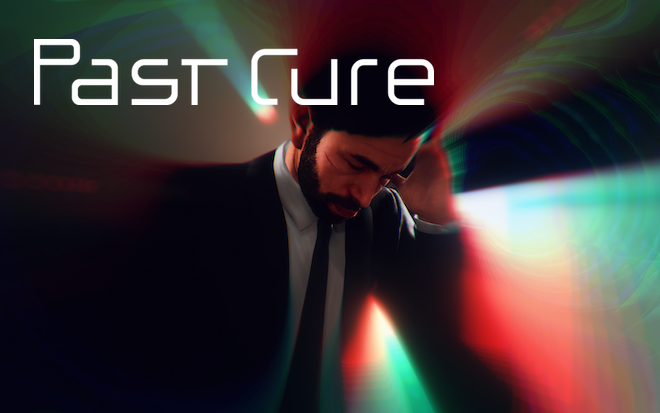Past Cure is a new third person shooter/horror title from indie developer Phantom 8 studios. In Past Cure, you play as an ex-soldier and amnesiac named Ian, who was taken and experimented on by the government in an attempt to fabricate a psychic warrior. While the procedure was a success, it left Ian with terrible headaches, horrible nightmares, and only fragments of his memory. Having escaped his captors, Ian now has questions he wants answered and a thirst for revenge.
As the opening sequence unfolds, you find yourself battling through one of Ian’s nightmares, this segment will serve as your training level familiarizing you with the basic controls of the game as you battle sentient porcelain statues. Ian has multiple skillsets to utilize in combat from his hand-to-hand combat abilities and firearms, to his mind’s psychic abilities, which include the ability to astral project your mind to the other side of the map. He even has reflexes which allow you to slow time down for the surrounding area for a short period. These skills open up plenty of options for completing your mission.
For example after running into a room with more enemies than I initially accounted for, I realized I was about to be on the losing end of a gunfight. I activated my reflex skill which allowed me to slow down time for the enemies and the environment, allowing me to manage a dire situation with surprising ease.
Past Cure’s gameplay, while solid, feels dated compared to other titles on the market, especially when it comes to fluidity. While the game is not choppy and the gameplay is smooth, it just doesn’t feel as fluid as it could when trying to string together a complex set of commands. Another issue that caused me frustration was trying to steal a keycard from a patrolling guard without being detected. Sounds easy when coupled with the ability to almost freeze time and it was — once the button prompt worked properly. I had a few attempts in which I hit the button to pick the pocket of my enemy only to see the keycard still on his belt, and when I tried again it would alert the guard and restart my mission. I hope they fix either the range of the prompt or its accuracy in registering the proper action.
Level design is basic with most rooms of an area looking like copies of each other with small differences to let you know you’re in a different area. For example, if you left a room in the parking garage with blue and black cars and a turn left to enter the next room, it would feature red and black cars. That being said some levels, while repetitive, have really cool design. An example would be a nightmare sequence that featured the room’s furniture mirrored on the ceiling but offset slightly for a really cool optical effect.
Combat is fun but has some issues, the biggest for me being the aiming system. I say this because in almost every firefight where an enemy would take cover behind an object with a piece visible (almost always the top of the head) when I would aim, the reticle would turn red signifying I could hit them only to fire and have the bullet “hit” the cover instead. One nice feature the team added was the shoulder swap option while you are aiming, making fighting multiple targets at different angles much easier.
The story is solid and while it didn’t have me on the edge of my seat, it definitely kept my attention while I was playing, which is the most important thing for me. I liked the topic Past Cure centered around, and appreciated that the team actually incorporated some fact into their fictional tale.
In all I could easily see Past Cure having been a huge title from a major developer in the early 2000s. While that may seem dated, the fact that this game was created by an eight man team of first time developers speaks volumes to their abilities and I truly look forward to seeing more titles from Phantom 8 Studios.
You can pick up a copy of Past Cure on PS4, Xbox One, and PC now for $29.99 to find out for yourself if you have what it takes to separate dreams from reality.
This review was based off the PS4 version of the game, using a code provided by the publisher.






